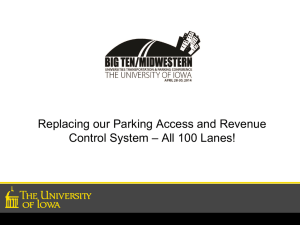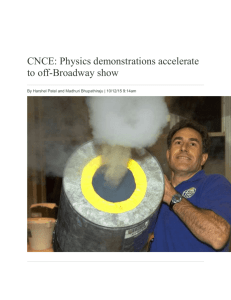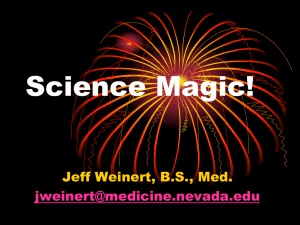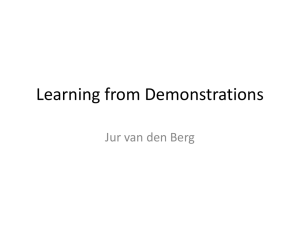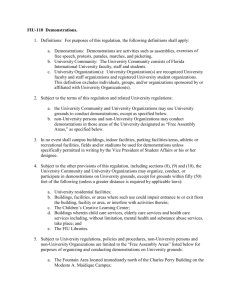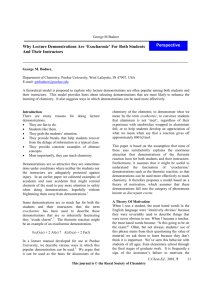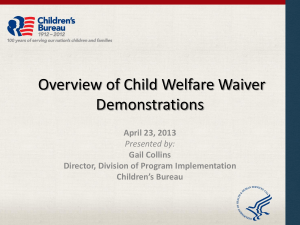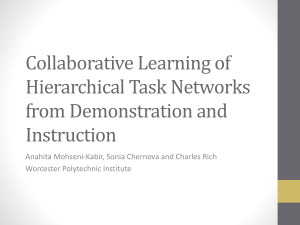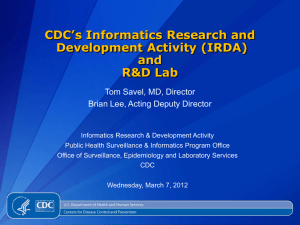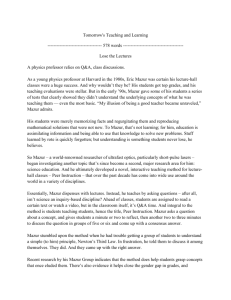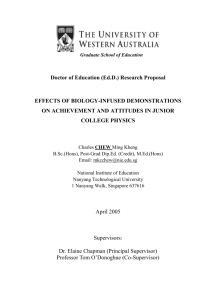Best Practices in Physics Demonstrations Or “Oh, I thought this was
advertisement
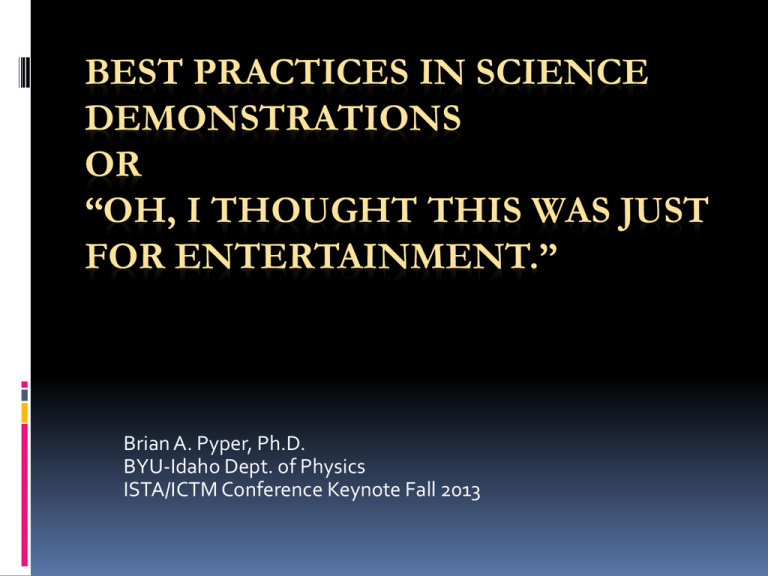
BEST PRACTICES IN SCIENCE DEMONSTRATIONS OR “OH, I THOUGHT THIS WAS JUST FOR ENTERTAINMENT.” Brian A. Pyper, Ph.D. BYU-Idaho Dept. of Physics ISTA/ICTM Conference Keynote Fall 2013 Why do Demos? Learning or Entertainment Demos show cool science Demos spark interest Students learn through demos We enjoy performing them Demos and Learning Our reason for performing demonstrations will be apparent in the way we do it. If we hope to improve learning with demonstrations, we need to do it in a way that takes into account how people learn. How do we view students? Students are like horses led to water/sheep (cats) to herd Students are like potential donors we want to impress Students are like politicians we don’t trust but need on our side Students are like lazy consumers paying as little for things as they can get away with Students are future colleagues, policymakers, and our kids’ teachers that need the best preparation for life and career that we can give How People Learn – Prior Knowledge Importance of Prior Knowledge Prior Knowledge is composed of neural synapse networks in the brain – physical structures. We as teachers can only help students change them under special conditions and they may block new learning. 1 How People Learn – Social Moderation People learn in Socially-Moderated settings. The social dynamics of motivation, peer interactions, and culture play a non-negligible role. How People Learn Epistemology What we as teachers, they as students, and the larger society think it means to learn, what counts as learning, and how we tell if learning has occurred affects how we learn. How We Learn - Metacognition Opportunities to reflect on our thinking are crucially important in learning. Looking at not just what we learned, but how we learned it, what we were thinking about, how we felt about it, and where we were mentally compared to where we are – all help us ‘learn’ better. 2 Previous Work - IUPP Di Stefano – 1996 – Students liked it, rated it highly in helping their learning, but had a hard time remembering what is was they were supposed to have learned from it. (also note the references in this paper to TPT articles going back to 1981) 3 Previous Work – Roth et al. Roth et al. (1996) – Students may fail to learn from demonstrations if they have insufficient existing frameworks in which to situate their observations, if distractions from different aspects of the demonstration conflict, or if they lack opportunities to discuss what they ‘saw’ and what it meant. 4 Previous Work - Tutorials Krauss (1997) – Students were learning from demonstrations (specifically looked at the monkey shooter) but not what we thought we were teaching. Demonstrations sparked interest, but not necessarily understanding. 5 Previous Work – Crouch et al. Crouch, Fagan, Callan & Mazur (2004) – Without the opportunity to predict and discuss the demonstration’s outcome, students having seen the demo had no better understanding of it than those who never saw it. 6 Previous Work - ILDs Sokoloff and Thornton – Using a learning cycle-type pre-lab and MBL experiments students predict and observe demonstrations in a PER-based environment, showing dramatic improvement in student attitudes and understanding. 7 Recommendations 1. 2. 3. 4. 5. 6. 7. Think about what you want the students to get out of the demo. If all you really want is to have fun with it, fine, but make sure that’s clear from the start. Practice it beforehand. Set it up and make the transition from explanation to demo seamless. Make sure (as appropriate) that the students understand the equipment and set-up, and discuss it with them/each other. Make students commit to a prediction and discuss their observations with each other afterward. Discuss analogous situations and applications in which the observed outcome might/might not change. Take the opportunity to learn from master demonstration experts, be enthusiastic and have Phun! Bibliography 1. J. Zull, “The Art of Changing the Brain: Enriching the Practice of Teaching by Exploring the Biology of Learning” Stylus (2002) 2. Bransford et al. (ed) “How People Learn: Brain Mind Experience and School” National Academy (2000) 3. R. Di Stefano, “Preliminary IUPP Results: Student reactions to in-class demonstrations and to the presentation of coherent themes”, Am. J. Phys. 64(1) p. 58-68 (1996) 4. Roth, McRobbie, Lucas & Boutonne, “Why May Students Fail to Learn from Demonstrations? A Social Practice Perspective on Learning in Physics” J. Res. Sci. Teach. 34(5), p. 509–533 (1997) 5. P. A. Kraus, ‘‘Promoting active learning in lecture-based courses: demonstrations, tutorials, and interactive tutorial lectures,’’ Ph.D. thesis, University of Washington (1997) 6. Crouch, Fagan, Callan & Mazur, “Classroom demonstrations: Learning tools or entertainment?” Am. J. Phys. 72(6) p. 835-838 (2004) 7. David R. Sokoloff & Ronald K. Thornton,"Using Interactive Lecture Demonstrations to Create an Active Learning Environment", The Physics Teacher, vol. 35, p. 340-346 (1997). See also Bybee, Powell and Trowbridge, “Teaching Secondary School Science: Strategies for Developing Scientific Literacy 9th ed.” Pearson (2008) p. 235-239
